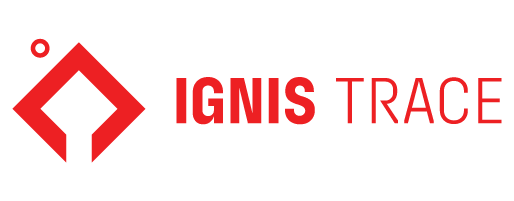An ATEX certificate is an internationally recognized document that verifies the safety of equipment and protective systems intended for use in potentially explosive atmospheres. Issued under European Union ATEX Directives, this certificate is essential for devices operating in environments where flammable gases, vapors, or dusts may be present. The answer to “what is an ATEX certificate?” is that it serves as formal proof that a product has been designed and tested to operate safely under such hazardous conditions.
In industries such as petrochemicals, mining, food processing, chemical manufacturing, and oil refineries, the risk of explosive atmospheres is a serious concern. In these settings, the ATEX document ensures that equipment meets strict safety requirements, preventing accidents and protecting both personnel and facilities. Beyond legal compliance, the certificate enhances a manufacturer’s credibility, opens access to international markets, and demonstrates a commitment to safety and quality. Using uncertified equipment in ATEX zones can lead to severe legal consequences and high-risk operational hazards, making this certification both a legal and strategic necessity.
What is an ATEX Certificate?
An ATEX certificate is an official approval confirming that equipment and protective systems are safe to use in potentially explosive environments. The term “ATEX” comes from the French ATmosphères EXplosibles and is regulated under European Union Directives 94/9/EC and 2014/34/EU. When someone asks “what is an ATEX certificate?”, the answer is that it’s a guarantee that the product has passed rigorous testing and meets specific safety and performance standards for hazardous locations.
Products are categorized according to the level of risk and the type of explosive atmosphere they are designed to withstand—whether from gases, vapors, or combustible dust. The ATEX document not only ensures safe operation but also provides manufacturers with a recognized standard that is accepted across many countries. Without it, selling or operating equipment in ATEX-regulated zones is prohibited, making certification an indispensable part of both safety compliance and market access.
Why is an ATEX Certificate Required?
An ATEX certificate is required to ensure that equipment used in explosive atmospheres will not become a source of ignition. This includes preventing risks from sparks, excessive heat, or electrical faults. In environments where flammable gases, vapors, or dust are present, even a minor equipment malfunction could lead to catastrophic accidents. The certification process verifies that the product is designed and manufactured to operate safely under such hazardous conditions.
From a legal standpoint, the ATEX document is mandatory for many industries within the European Union and other regions that recognize ATEX standards. Without it, equipment cannot be legally sold or used in regulated zones. Beyond compliance, what is an ATEX certificate can be answered as a crucial assurance of workplace safety, protecting workers, assets, and a company’s reputation. It also provides a competitive edge by signaling that the manufacturer meets internationally accepted safety benchmarks.
How to Obtain an ATEX Certificate?
Obtaining an ATEX certificate involves meeting specific technical requirements and successfully completing a formal conformity assessment process. The first step is to determine the ATEX category and protection level required for the intended operating environment. Manufacturers must then prepare detailed technical documentation, including design drawings, material specifications, and safety analysis reports.
Once documentation is complete, the product must be tested by a Notified Body—an officially recognized certification authority. These tests confirm that the equipment complies with ATEX safety standards and can be operated without risk in explosive atmospheres. After passing all assessments, the ATEX document is issued, allowing the product to be sold and used in regulated markets. In short, the answer to “what is an ATEX certificate” is not only the document itself but also the entire process of proving compliance through design, testing, and approval.
What Documents are Required for an ATEX Certificate Application?
Applying for an ATEX certificate requires a comprehensive set of documents to prove that the product meets all relevant safety standards. This typically includes detailed design drawings, a full list of materials used, manufacturing process descriptions, and a risk assessment report. These documents establish how the product prevents ignition sources in potentially explosive environments.
Additional requirements for the ATEX document may include test reports, an EU Declaration of Conformity, and proof of an implemented quality management system. To answer “what is an ATEX certificate” in this context—it is the final validation resulting from complete, accurate, and verified documentation. Missing or inaccurate information can delay the certification process or result in rejection, making thorough preparation essential.
In Which Areas is the ATEX Certificate Mandatory?
An ATEX certificate is mandatory in any industrial environment where explosive atmospheres may occur. These are defined as areas where flammable gases, vapors, or combustible dust can mix with air to create the potential for an explosion. The certificate ensures that equipment used in such zones will not act as an ignition source under normal operation or foreseeable fault conditions.
Industries that typically require the ATEX document include oil and gas, chemical processing, mining, pharmaceuticals, food production, and waste management facilities. Even agricultural operations such as grain storage and milling, where combustible dust is present, fall under ATEX requirements. In this context, what is an ATEX certificate can be seen as both a legal obligation and a safeguard for human life, property, and environmental protection.
For Which Products is the ATEX Certificate Mandatory?
The ATEX certificate is required for a wide range of equipment and protective systems used in explosive atmospheres. This includes electric motors, lighting fixtures, control panels, sensors, valves, pumps, and ventilation systems. In addition, devices such as gas detectors, measurement instruments, and communication equipment designed for hazardous zones must also be certified.
In essence, what is an ATEX certificate in this context is the official confirmation that these products have been tested and approved to prevent ignition risks. Without the ATEX document, using such equipment in ATEX-classified zones is illegal and highly dangerous. Manufacturers and operators must ensure that all applicable products are fully compliant before deployment in hazardous environments.
Our Products with ATEX Certification
At Ignis Trace, we design and supply a range of industrial solutions that meet the highest safety standards for explosive atmospheres. Every product in this range holds an ATEX certificate, proving compliance with strict international safety requirements. For us, what is an ATEX certificate is more than a legal document—it’s a commitment to ensuring reliable performance and operator safety in the most challenging environments.
Our ATEX document-approved products include:
- ATEX Certified Industrial Heating Cables
- ATEX Certified Explosive Gas Detectors
- ATEX Certified Control Panels
- ATEX Certified Sensors and Measurement Devices
Each product undergoes rigorous design, testing, and quality control to ensure maximum safety and durability in hazardous locations.
What are the Benefits of Obtaining an ATEX Certificate?
An ATEX certificate delivers significant advantages beyond fulfilling legal requirements. First and foremost, it assures that equipment has been tested to operate safely in explosive atmospheres, thereby preventing accidents and protecting workers. This directly reduces downtime, avoids costly incidents, and safeguards company assets. In this sense, what is an ATEX certificate can be answered as a proactive measure for operational safety.
From a business perspective, the ATEX document enables access to regulated markets, particularly within the European Union and other regions recognizing ATEX standards. Certified products earn customer trust, enhance brand credibility, and improve competitiveness. Manufacturers with ATEX-approved equipment can more easily establish partnerships and expand their market presence. Additionally, the certification process often leads to improved product quality and more robust manufacturing practices.
Conformity Assessment Process for ATEX Certification
Obtaining an ATEX certificate requires passing a structured conformity assessment process to verify that the product meets all safety and performance standards for explosive atmospheres. The process begins with determining the product’s ATEX category based on the level of risk in its intended environment. A detailed risk assessment is then carried out to identify and eliminate potential ignition sources through design and engineering controls.
Next, the product undergoes testing by an accredited Notified Body. These tests confirm that the equipment operates safely under both normal and fault conditions. If the product complies with all requirements, the ATEX document is issued. In this stage, what is an ATEX certificate is the official confirmation from a recognized authority that the product is suitable for use in hazardous zones. Manufacturers are also required to maintain technical documentation and be prepared for periodic audits to ensure ongoing compliance.
What is the Validity Period and Renewal Process for an ATEX Certificate?
An ATEX certificate is typically valid for a set period, often up to five years, provided that the product’s design, materials, and manufacturing process remain unchanged. Any modification to these elements requires a review and, in many cases, a full recertification. This ensures that the certified product continues to meet the latest safety standards for explosive atmospheres.
The renewal process involves retesting and reassessing the equipment against current ATEX regulations. If the product passes, a new ATEX document is issued, extending its approval for continued market use. Here, what is an ATEX certificate can also be understood as an ongoing commitment to safety rather than a one-time achievement. Regular monitoring and renewal safeguard both compliance and operational safety.
Things to Consider When Obtaining an ATEX Certificate
When pursuing an ATEX certificate, it’s essential to design the product with compliance in mind from the earliest stages. The correct ATEX category must be determined based on the specific hazardous environment where the equipment will operate. This classification influences material choices, design features, and manufacturing methods. Selecting the wrong category can lead to costly delays or even certification failure.
Manufacturers should also ensure that all technical documentation, including risk assessments, design drawings, and quality management records, is complete and accurate before submission. In the context of what is an ATEX certificate, it’s not just the final ATEX document that matters but the proof of a fully compliant design and production process. Partnering with an experienced and accredited Notified Body can streamline the process, reduce errors, and ensure that certification is achieved efficiently.

 Türkçe
Türkçe



